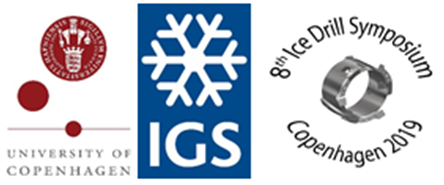Speaker
Description
We present the results of laboratory and field tests of several new technologies developed at Stone Aerospace during the past five years in response to NASA needs to advance technology readiness levels for planetary missions to icy Ocean Worlds. Each of the approaches we present were developed in response to a common problem: emulating a nuclear power source that will be used on a flight cryobot. The amount of power needed to penetrate tens of kilometers of cryogenic ice on an outer planet moon force the use of nuclear power (most likely in the form of a compact fission reactor). For terrestrial field testing a non-nuclear surrogate power source is needed that will emulate to a high level of fidelity the size and performance of a micro fission reactor. We investigated three uniquely different approaches to this problem. In Project VALKYRIE (2010-2016) a 5 kW industrial laser was used to beam power through a fiber optic thread to a remote cryobot. A beam dump, located the nose of the cryobot, was used to convert photons to heat and electricity. Jet pumps pulled melt water through a heat exchanger surrounding the beam dump and created an open-loop hot water drill. The system was tested on the Matanuska Glacier in Alaska and achieved descent rates of 1 m/hour at 5 kW input power for a 25 cm diameter vehicle operating in temperate ice, which closely followed theoretical predictions. In Projects SPINDLE and ARCHIMEDES (2015-2019), a second variation on this theme eliminated the beam dump and jet pumps and replaced them with focusing optics at the nose of the vehicle. The optics were designed to focus the beam approximately 4 vehicle diameters ahead of the nose of the vehicle. This approach led to a spectacular descent rate of 22 m/hour at 5 kW input power for a 5 cm diameter vehicle operating in temperate ice in laboratory tests. The design works because of an unusual disparity between the transmission coefficient of photons in ice versus liquid water at 1070 nm wavelength. At this wavelength nearly 100% of the power is absorbed by the ice ahead of the vehicle, thus minimizing sidewall losses. Lastly, we present results from Projects SPINDLE and THOR (2015-2022) that are developing means for radically improving the classical Philberth probe. We will describe novel high voltage AC power transmission means and methods for liquid resistive electrical-to-thermal power conversion used to drive a closed-cycle hot water drill. These methods allow for power dumps at the nose of a cryobot at unprecedented power density levels exceeding 600 kW/liter. We also discuss terrestrial applications for these drilling technologies and the logistics required for deployment of these drill systems to remote field sites.

